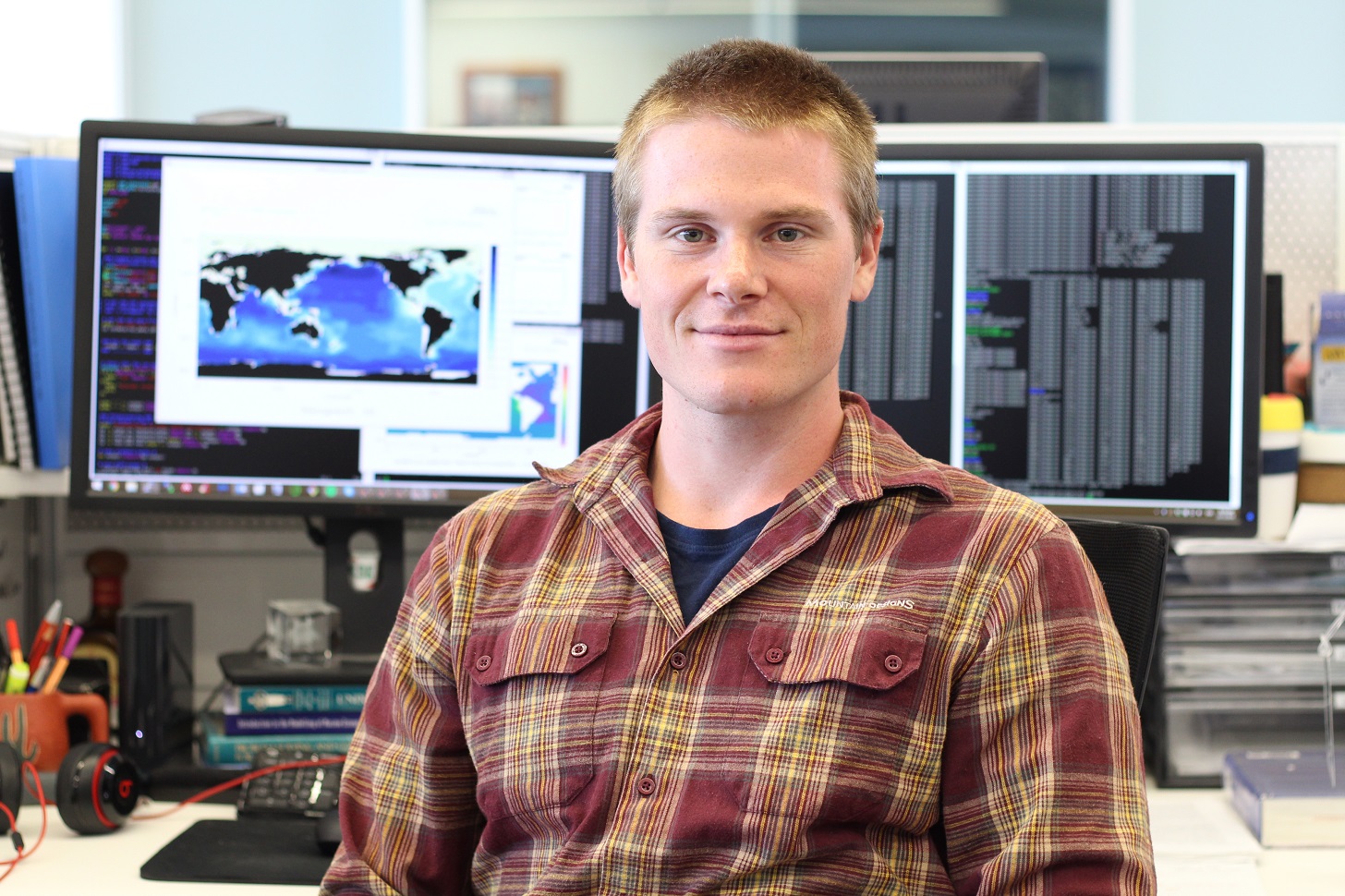
Changes in ocean biogeochemical processes were the key driver of the world’s climate at the peak of the last ice age and will be a major factor in future climate change, a new study led by IMAS researchers and published in the international scientific journal Climate of the Past has shown.
Lead author Pearse Buchanan (pictured, below) said the ocean was known to significantly influence the global climate, including modulating the regular cycles between colder and warmer phases in the past.
But previously it had been unclear whether it was mainly physical or biogeochemical changes in the ocean that were modulating the environmental fluctuations between glacial and interglacial periods
Mr Buchanan said the study used a carbon-climate model developed by the CSIRO and the University of Tasmania to simulate the impact of a range of ocean processes during the Last Glacial Maximum (LGM), when global ice cover reached its peak around 25 000 years ago.
 “The ocean is the primary driver of climate change over thousands of years, between ice ages and warm interglacial periods, by redistributing heat and carbon stored in the ocean,” Mr Buchanan said.
“The ocean is the primary driver of climate change over thousands of years, between ice ages and warm interglacial periods, by redistributing heat and carbon stored in the ocean,” Mr Buchanan said.
“In this study we sought to explain how the ocean was able to draw down significant amounts of carbon from the atmosphere at the time of the Last Glacial Maximum.
“There were physical changes to the ocean, such as increased ventilation of dense waters in the Southern Ocean, sea-ice expansion, and cooling.
“But the research found that the main influence was exerted by biogeochemical changes such as ocean productivity, the way sinking organic matter is remineralised and stored in the deep ocean, and the amount of calcium carbonate produced by calcifying organisms.”
Mr Buchanan said the difference in atmospheric carbon between the Last Glacial Maximum and pre-industrial levels was around 95 ppm, of which 55 ppm could be attributed to biogeochemical changes and just 40 ppm to physical changes in ocean circulation and solubility.
He said the research gave an insight into the mechanisms by which the ocean, and consequently the global climate, will respond in future as carbon levels rise.
“Once you have those physical changes in the ocean the rest of the story – about 60% of the story – for the Last Glacial Maximum can only be explained when you start incorporating fundamental changes in biogeochemical processes that occur in the ocean.
“What that means is that in the future as circulation changes, sea-ice reduces and surface waters in the ocean get warmer, we also need to keep an eye on how ocean biogeochemical processes respond,” Mr Buchanan said.
Pearse Buchanan is an IMAS PhD student studying in the joint UTAS-CSIRO PhD Program in Quantitative Marine Science.